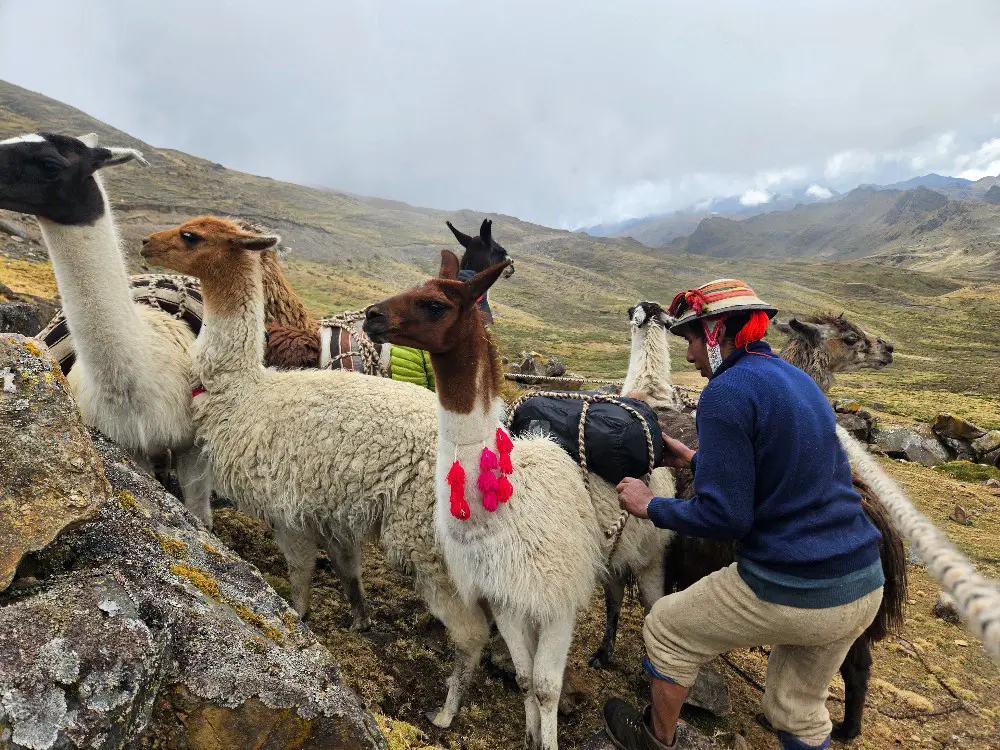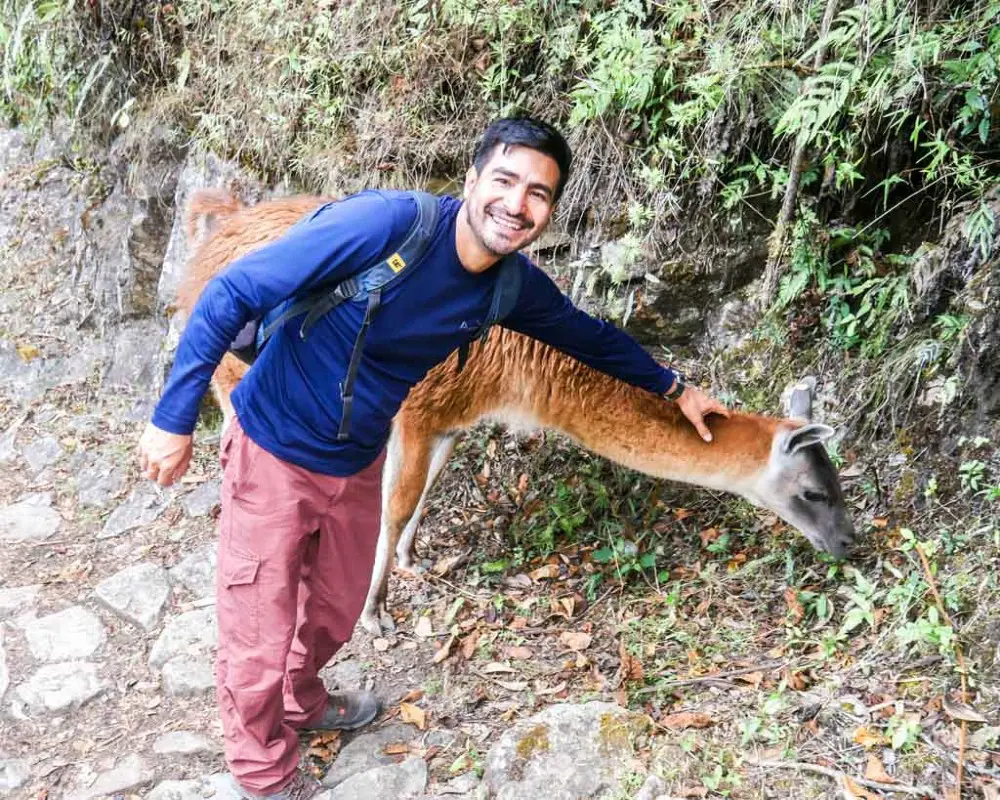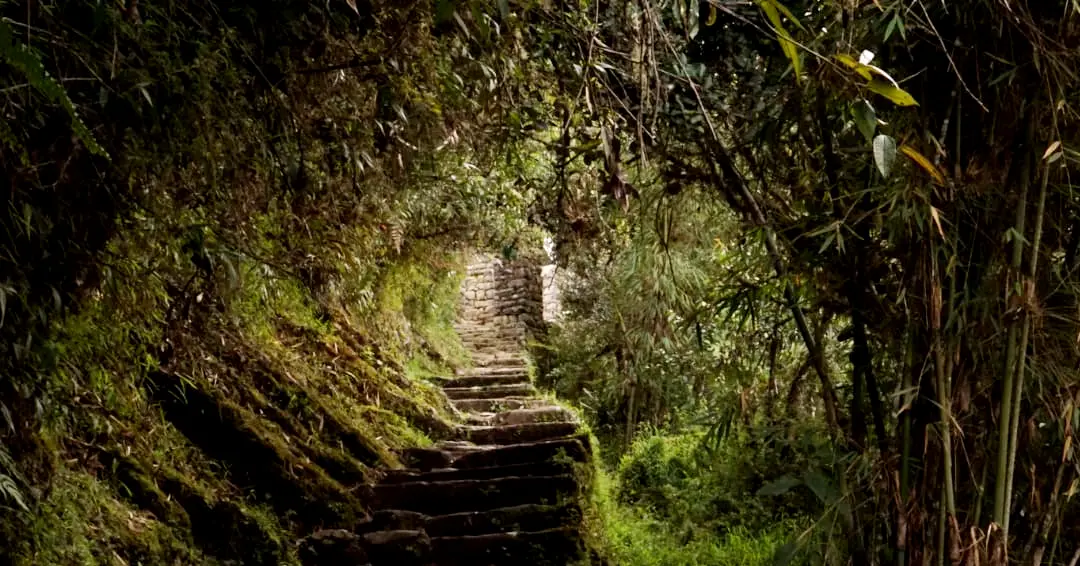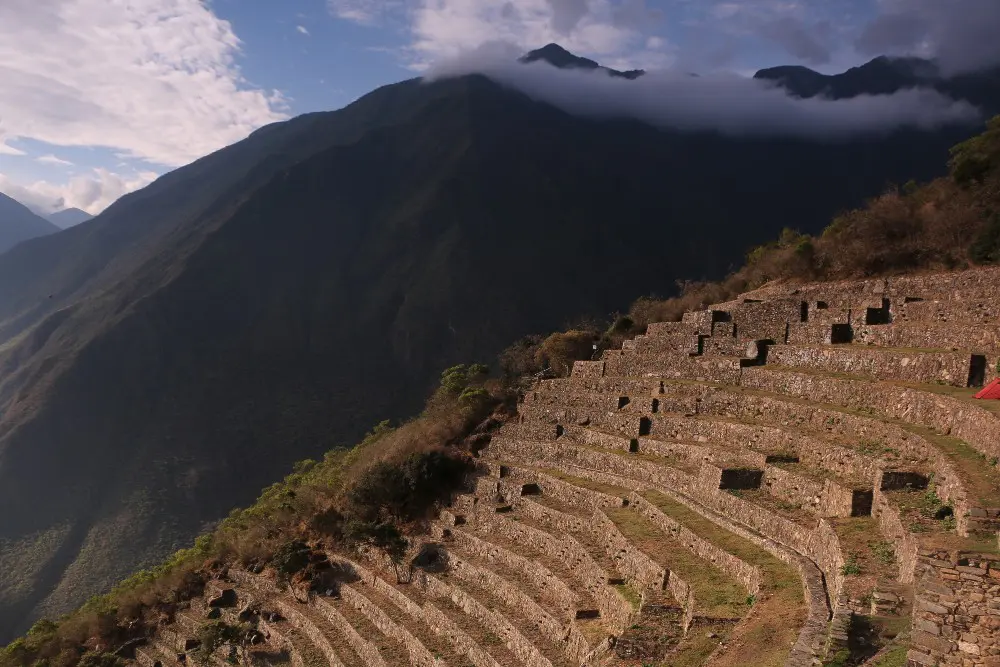A llama blessing ceremony is an unforgettable experience.Â

The day began with a drive through stunning scenery: majestic mountains, waterfalls, rolling green hills dotted with stillwater ponds (the glassy surface occasionally interrupted by the calm drip-drop of rain from the clouds above).
As we rose in altitude, we saw grazing llamas scattering the hillsides. The change in altitude does affect some (my hand is raised), but chewing coca or ‘agua de florida’ can help if you happen to be one of the unlucky ones.Â

The chill of being so high in the mountains was easily solved with the traditional clothing we were given: scarf or montera, along with a beautifully woven skirt called a pollera. The men’s attire were ponchos of the same thick and wonderfully colorful fabric. Â
The llama blessing ceremony began with ‘Juancito’ (our Quechua speaking guide) explaining the symbolism of each object layed out on the ground. The first item was coca leaves, (a plant indigenous to South America and considered sacred by many), followed by alpaca wool, wine, and chicha (a Peruvian drink made from corn).
The objects were blessed and buried in the earth as an offering to pachamama (mother earth). The offerings were buried in the earth while a blessing in Quechua was said. Since Quechua is Juan’s native language, our guide, Simon, translated his words into English for us. Â
The second part of the blessing consisted of catching a llama (or in this case, an alpaca), tying it down, and shearing some of the wool.
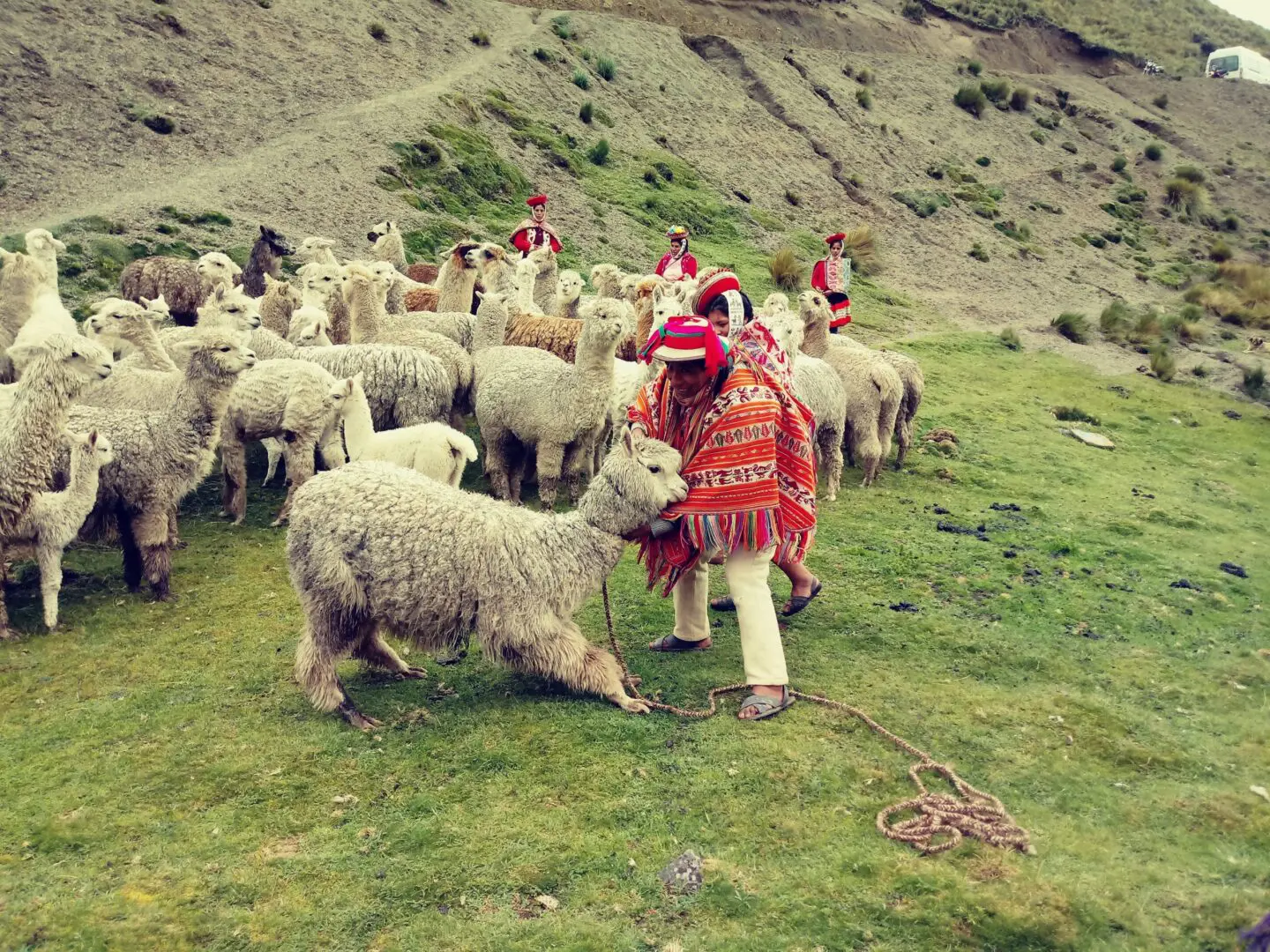
We were invited to help shear (if we desired) as Juan demonstrated how to take the wool and spin it into yarn using a wooden spindle.Â
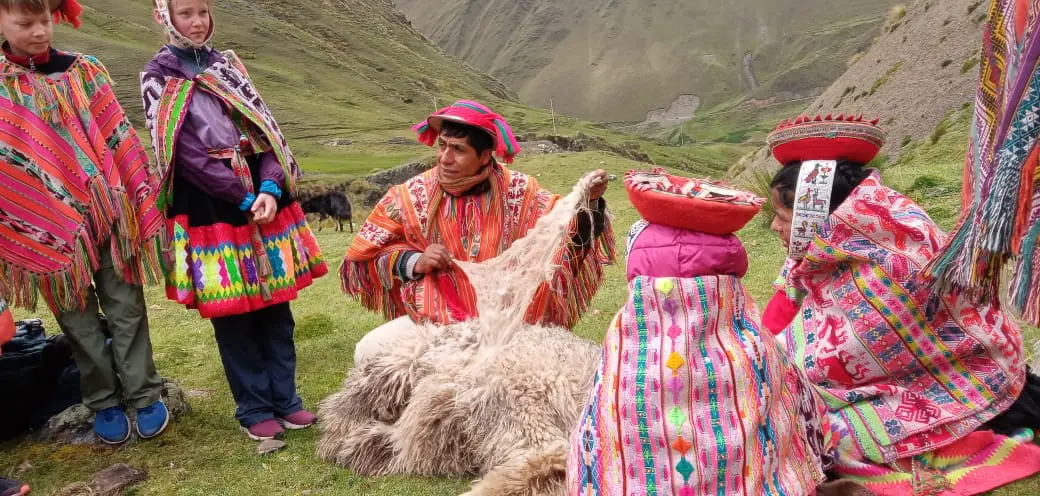
Juan explained that since this particular community is secluded in the mountains, they don’t have access to modern technology. Instead, they spend their days raising the alpacas and llamas to use their wool to create richly dyed fabrics.Â
These hills were once covered with more horses than alpacas. The Spanish brought the horses during the Inca conquest. However, the communities found converting wool from llamas and alpacas was more profitable to than raising horses.
Once the ceremonial shearing was complete, Juan set the alpaca free to join the others grazing.Â

The finale of the ceremony was the “marriage” of two young alpacas. The babies were caught and red dye was placed on their wool and they were then sprinkled with flower petals.Â
A blanket was then placed over the babies (considered the ‘honeymoon’ phase), while music was played on flutes. If the alpacas leapt quickly from under the blanket, it meant a good “marriage”, and many baby alpacas would be born that year.Â
The ceremony was completed with dancing to music made by two flutes and a conch shell. One of the musicians showed me how to blow the conch shell (known as ‘pututu’) and even asked if I wanted to play for the final dance (I declined, saving my air for oxygen).

We finished by visiting Juan’s family home and enjoying a meal of “pachamanca,” or food cooked in an underground oven, shared with those who call The Andes their home. It was truly an unforgettable experience.Â
Llama blessings, and several other Andean ceremonies, can be included in almost any Ayni Peru itinerary. Our Lares Homestay Trek and Ausangate (or Rainbow Mountain) routes are ideal, because of the presence of Paq’os in their home communities. However, day visits are possible, as are ceremonies near Lake Titicaca and the northern part of the country. Contact us for more details!
